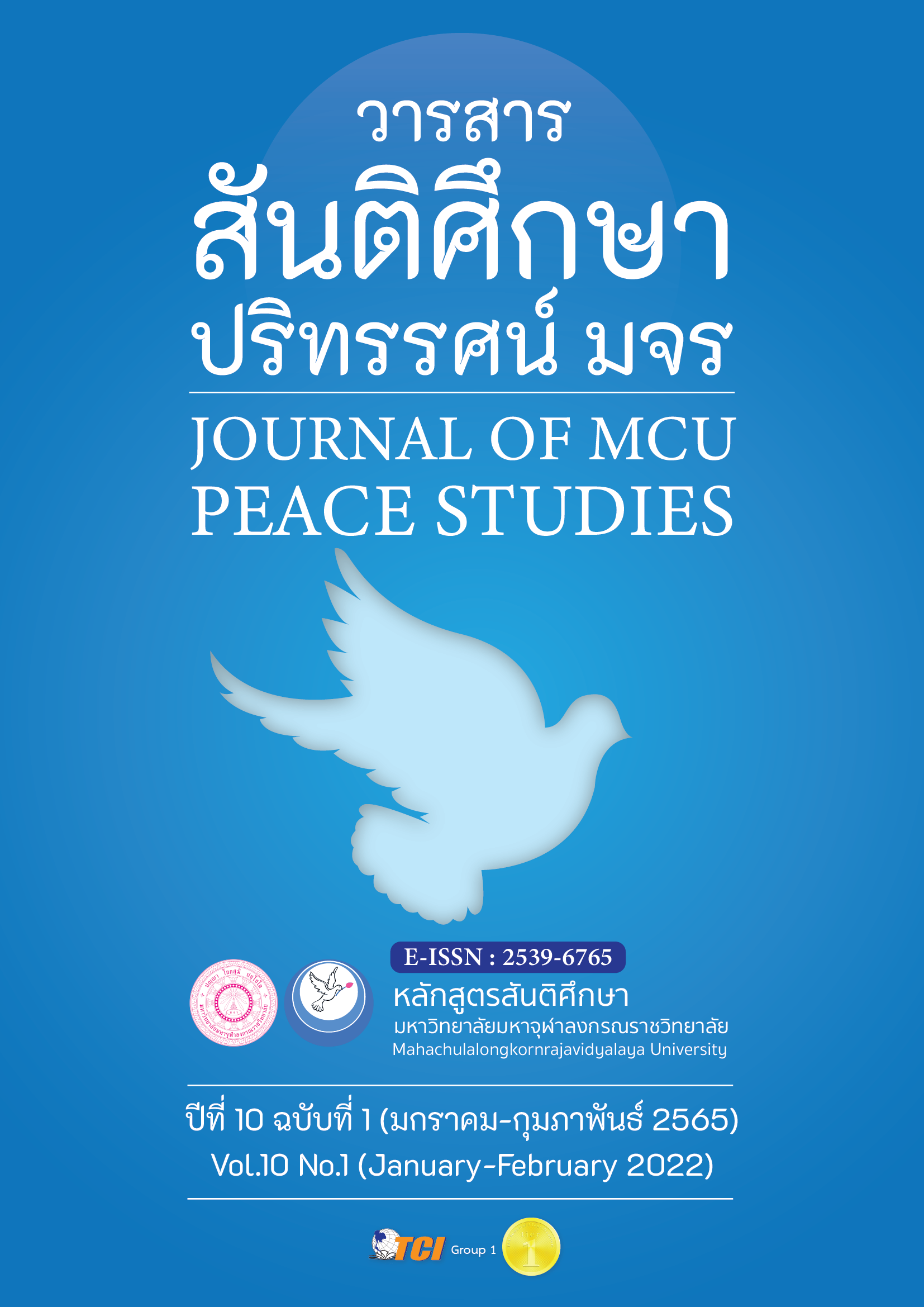รูปแบบการพัฒนาการท่องเที่ยวแบบเศรษฐกิจ สร้างสรรค์ด้วยเครือข่ายธุรกิจเซรามิก: กรณีศึกษาจังหวัดลำปาง
Main Article Content
บทคัดย่อ
บทความวิจัยนี้มีวัตถุประสงค์ 1) เพื่อศึกษาปัจจัยเชิงเหตุที่มีอิทธิพลต่อการเข้าร่วม การเห็นประโยชน์ และความร่วมมือของเครือข่ายเซรามิก ในอุตสาหกรรมการท่องเที่ยวอย่างยั่งยืน 2) แก้ปัญหา อุปสรรค และกำหนดการสร้างความร่วมมือของธุรกิจเซรามิกกับภาคสังคม และภาครัฐ และ3) พัฒนารูปแบบเครือข่ายธุรกิจเซรามิกสร้างสรรค์เพื่อการท่องเที่ยวอย่างยั่งยืน เป็นงานวิจัยเชิงประยุกต์ใช้วิธีผสมการวิจัยเชิงปริมาณ โดยใช้แบบสอบถาม 2 กลุ่ม คือ กลุ่มนักท่องเที่ยวและผู้ที่เกี่ยวข้องกับอุตสาหกรรมการท่องเที่ยว จำนวน 400 ชุด และการวิจัยเชิงคุณภาพ เก็บรวบรวมข้อมูลโดยการสัมภาษณ์เชิงลึกจาก ผู้นำชุมชน ชาวบ้าน ผู้ประกอบการ และผู้มีส่วนได้ส่วนเสียจากแหล่งท่องเที่ยว 3 พื้นที่ โดยการสนทนากลุ่ม จำนวน 22 คน สัมมนาปฏิบัติการ จำนวน 35 คน และเสวนาพัฒนาการ จำนวน 40 คน และการบูรณาการรูปแบบในพื้นที่ การวิเคราะห์ข้อมูลสถิติพรรณนา การวิเคราะห์เนื้อหา และการตีความ
ผลการศึกษาพบว่า ปัจจัยสำคัญในการสร้างเครือข่ายเพื่อการพัฒนาการท่องเที่ยวเชิงเศรษฐกิจสร้างสรรค์ ได้แก่ 1) ความพร้อมของชุมชนด้วยทรัพยากรวัฒนธรรม ประเพณี วิถีชีวิต และการส่งเสริมการท่องเที่ยวในท้องถิ่น ซึ่งชุมชนต้องมีวัตถุประสงค์การวางแผนที่ชัดเจนในการจัดการท่องเที่ยว 2) ผู้นำและทีมงานในเครือข่ายชุมชนต้องมีวิสัยทัศน์สร้างสรรค์ มีอัธยาศัยดี มีความรู้ด้านการท่องเที่ยว และ 3) เครือข่ายความรู้ ความไว้วางใจ ความร่วมมือระหว่างภาครัฐ เอกชน และภาครัฐต้องส่งเสริมปัญหาและอุปสรรคที่เกิดจากการรวมกันยาก และจุดเด่นของแหล่งท่องเที่ยวในท้องถิ่นคือขาดการประชาสัมพันธ์ ในการพัฒนารูปแบบต้องเน้นการพัฒนาคน ให้เป็นผู้ให้บริการที่ดีการส่งเสริมการท่องเที่ยวเชิงการเรียนรู้เชิงสร้างสรรค์ ต้องบูรณาการกิจกรรมให้สัมพันธ์กันเป็นระบบ โดยจัดให้มีสิ่งอำนวยความสะดวก ส่งเสริมกิจกรรมการเล่าเรื่องเพื่อการเรียนรู้เชิงสร้างสรรค์และเชื่อมโยงเครือข่ายสถานที่ท่องเที่ยวที่สำคัญ
Article Details

อนุญาตภายใต้เงื่อนไข Creative Commons Attribution-NonCommercial-NoDerivatives 4.0 International License.
ทัศนะและความคิดเห็นที่ปรากฏในบทความในวารสาร ถือเป็นความรับผิดชอบของผู้เขียนบทความนั้น และไม่ถือเป็นทัศนะและความรับผิดชอบของกองบรรณาธิการ ยินยอมว่าบทความเป็นลิขสิทธิ์ของวารสาร
เอกสารอ้างอิง
Adilla, P., Sirichai, P., Patanat P., & Kanchana, Y. (2012). A Study of Potential and Value of Tourism Products for Increasing Income in Chai Nat, Sing Buri, Sa Kaeo, and Samut Sakhon Provinces, in the Central Region of Thailand. Bangkok: The Thailand Research Fund (TRF).
Chadaporn, S. (2016). Factors Affecting Tourist’s Decision Making on Traveling to King Mongkut Science Park, Waghor, Prachuab Khiri Khan Province. Bangkok: The National Research Council of Thailand (NRCT) and The Thailand Research Fund (TRF).
Danuvat, S. (2014). The Phenomenon of Success for sustainable Network. Management of Local Community: Case study in Ban KhokPayom Community, Amphoe La-ngu, Satun Province. Song Khla: Songkhla Rajabhat University Research and Development Institute.
Gazette. (2015). Regulations of the Prime Minister's Office on Digital Telecommunications Commission for the economy and society. Retrieved April 25, 2018, from http://www.ratchakitcha.soc.go.th/DATA/PDF/2558/E/053/1.PDF
Iuliana, P., & Marinela, G. (2013). Tourist satisfaction in rural areas- a comparative study on rural areas from Romania and Hungary. Proceedings of the International Conference Marketing - from Information to Decision, Nov2013, Vol. 6, 223-235. 13p.
Kanchana, S. et al. (2013). Full paper of research project: Voluntourism Development in the Upper Northern Region of Thailand. Bangkok: Support by National Research Council of Thailand (NRCT) and The Thailand Research Fund (TRF) .
Office of the National Economic and Social Development Board. (2011). Creative Economy. Bangkok: B.C. Press.
Oranoot, K. & Chokchai, S. (2013). Sustainable Tourism Management for Supporting ASEAN Economics Community. Journal of Politics and Government, Current issues in ASEAN, 4(1), 200-227.
Patthaya, S., Supananee, K., & Thammarong U. (2014). Factor of eco-historical tourism development in Puntainorasing historical area, Samutprakan province. Journal of the Humanities and Social Sciences. Mahasarakham University, 33(1), 140-150.
Phra Maha Suthit Aphakaro (Uopoun) et al. (2013). The Model and Process of BuddhismBased Tourism Development in Thailand. Bangkok: The National Research Council of Thailand (NRCT) and The Thailand Research Fund (TRF).
Pongsak, P., Boonthong, D., & Vimol, C. (2015). The Strategies for Sustainable Tourism Administration of Kamphaeng Phet Province. Journal of the Humanities and Social Sciences, 21(2), 173-186.
Ritinan, K. (2014). Creative economy for a new day in the age of globalization. Bangkok: APM Group Solutions.
Sripayon, N. et al. (2014). The Co-creation of Tourism Management for Sustainable Development of Lampang Community Identity. Lampang: National University.
Thedchai, C. (2009). The role of local government organizations and sustainable tourism development Based on the concept of Sufficiency Economy. Nonthaburi: King Prajadhipok's Institute.
Thitisak, V. (2014). Creative Tourism: Thai Travel Preparation. Journal of Hospitality and Tourism, 9(1), 64-77.
Wan, Y. K. P., & Chan, S. H. J. (2013). Factors that Affect the Levels of Tourists' Satisfaction and Loyalty towards Food Festivals: a Case Study of Macau. International Journal of Tourism Research, 15(3), 226-240.
Weerasuk, U. et al. (2014). Community Participatory Action Research for Hot Spring Tourism Development in the Western Thailand. Bangkok: The National Research Council of Thailand (NRCT) and The Thailand Research Fund (TRF).
Yothin, S. (2015). Mixed research methodology. Institute for Population and Social Research Mahidol University. Retrieved April 25, 2018, from http://www.thaivbd.org/n/researchs/download/238.


